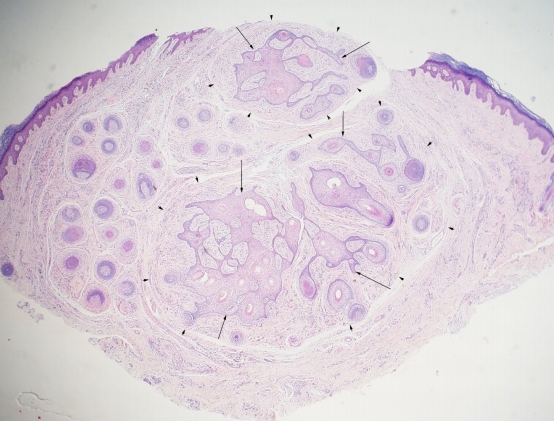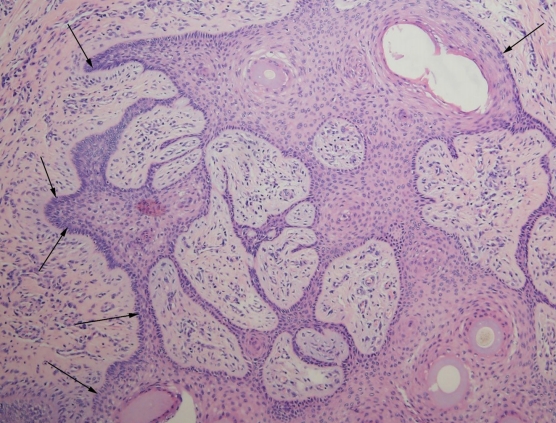 |
 |
- Search
| Arch Craniofac Surg > Volume 22(4); 2021 > Article |
|
Abstract
Notes
Conflict of interest
Yong Chan Bae is an editorial board member of the journal but was not involved in the peer reviewer selection, evaluation, or decision process of this article. No other potential conflicts of interest relevant to this article were report.
Ethical approval
The study was approved by the Institutional Review Board of Pusan National University Hospital (IRB No. 2106-018-104) and performed in accordance with the principles of the Declaration of Helsinki. Written informed consent was obtained.
Fig.┬Ā2.

Fig.┬Ā3.

Table┬Ā1.
| Author | Case | Age (yr)/sex | Location | Tumor size | Mass appearance |
|---|---|---|---|---|---|
| Scully et al. [3] | 1 | 65/F | Chin | 5 mm in diameter | Skin-to-pink colored, dome-shaped papule |
| Starink and Brownstein [5] | 2 | 49/M | Chin | 5 mm in diameter | Yellowish nodule |
| 3 | 20/F | Nose | Skin-colored papule | ||
| 4 | 50/M | Cheek | Skin-colored papule | ||
| 5 | 60/F | Ear | 3 mm in diameter | Dome-shaped papule | |
| 6 | 52/M | Eyebrow | 6 ├Ś 4 mm | ||
| Hong et al. [8] | 7 | 40/F | Scalp | 7 ├Ś 6 ├Ś 5 mm | Skin-to-pink-colored papule |
| Chang et al. [2] | 8 | 37/F | Eyelid | 5 ├Ś 5 mm | Skin-colored papule |
| Cesinaro et al. [6] | 9 | 63/F | Nose | 12 ├Ś 10 mm | Skin-colored papule |
| Cho et al. [9] | 10 | 45/M | Ear | 12 ├Ś 10 ├Ś 8 mm | Flesh-colored mass |
| Criscito et al. [10] | 11 | 72/F | Cheek | 4 mm in diameter | Flesh-colored, dome-shaped papule |
| Sohn et al. [11] | 12 | 50/M | Posterior auricular region | 10 ├Ś 12 mm | Flesh-colored papule |
| Wang and Cheng [1] | 13 | 68/F | Eyelid | 5 ├Ś 5 ├Ś 4 mm | Flesh-colored papule |
| Mishra et al. [4] | 14 | 50/M | Eyelid | 3 ├Ś 3 ├Ś 2 cm |
REFERENCES
- TOOLS
-
METRICS

-
- 2 Crossref
- Scopus
- 3,818 View
- 98 Download
- Related articles in ACFS
-
Solitary fibrofolliculoma on the nasal septum: a case report2023 June;24(3)
A giant solitary vellus hair cyst on the nasal root2020 October;21(5)
Solitary Piloleiomyoma in the Scalp2017 March;18(1)
A Case Report of Verrucous Carcinoma in Lower Lip.2001 April;2(1)
A Case Report of Lymphoepithelioma-like Carcinoma on the Temple.2008 April;9(1)







